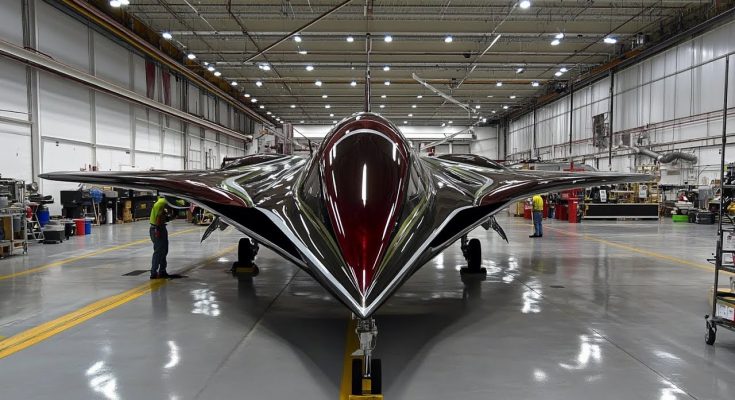The U.S. Air Force (USAF) is widely regarded as one of the most advanced and powerful air forces in the world, and as such, it continually seeks to maintain an edge over potential adversaries. One of the most ambitious projects currently underway within the USAF is the development of a 7th-generation fighter jet that promises to be a game-changer in aerial combat. While details remain largely secret, there are several key features that experts believe will characterize this highly classified aircraft.
Stealth and Sensor Fusion
The 7th-generation fighter is expected to push the boundaries of stealth technology even further than its predecessors, including the 5th-generation F-35 and F-22 Raptors. These planes already boast impressive radar-absorbing coatings, internal weapon bays, and low-observable designs. However, the new jet is anticipated to employ next-level stealth features, such as advanced composite materials, which would make it even harder to detect by enemy radars.
One of the primary challenges faced by modern air forces is the ability to operate in contested environments where radar jamming, electronic warfare, and other countermeasures are in play. To address this, the new fighter jet is likely to incorporate cutting-edge sensor fusion technologies. These systems would enable the aircraft to effectively process and analyze vast amounts of data from a variety of sources, including onboard sensors, satellites, and other aircraft, giving pilots a comprehensive picture of the battlefield in real time.
Hypersonic Speed and Next-Gen Propulsion
In terms of performance, the 7th-generation fighter jet is expected to exceed the capabilities of its predecessors, incorporating hypersonic speeds that reach Mach 5 (five times the speed of sound) or higher. Hypersonic speeds would allow the jet to outrun virtually any adversary, evade enemy missile systems, and strike targets with unprecedented speed. The integration of advanced propulsion technologies, such as adaptive cycle engines, is key to achieving these high speeds while maintaining fuel efficiency and maneuverability.
The propulsion systems of this aircraft are also likely to be highly advanced, incorporating technologies that offer better fuel economy and higher thrust-to-weight ratios, enabling the aircraft to operate over long distances without compromising performance. These improvements would make it more effective in both long-range interdiction missions and rapid-response scenarios.
Autonomous Capabilities and AI Integration
Perhaps one of the most exciting features of the 7th-generation fighter is its use of artificial intelligence (AI) and autonomous flight systems. These systems could take on a variety of roles, from assisting the pilot in complex decision-making to even performing certain operations autonomously, such as flying the aircraft during high-stress combat situations. AI could also be employed to optimize mission planning, manage communications with other aircraft and command centers, and predict enemy actions, giving the pilot a significant advantage.
The fighter may also be designed with the ability to operate in swarms, where multiple aircraft can work together in a coordinated manner without direct input from a human pilot. This concept could provide unmatched levels of flexibility in the battlefield, where manned and unmanned systems collaborate seamlessly.
Unprecedented Armament
As for weapons, the 7th-generation fighter jet is expected to carry advanced and flexible payloads. It may feature next-generation missiles, directed-energy weapons (like lasers), and hypersonic munitions capable of striking targets on the ground, in the air, or even in space. This versatility in armament would allow the aircraft to engage a wide range of threats, from high-altitude bombers to advanced surface-to-air missile systems.
Conclusion
While much about the 7th-generation fighter jet remains speculative and shrouded in secrecy, one thing is certain: the USAF is working diligently to create an aircraft that will provide unmatched capabilities in aerial combat. With advancements in stealth, sensor fusion, hypersonic speed, AI, and weaponry, the 7th-generation fighter promises to be a cornerstone of U.S. air dominance for decades to come. Though the details remain tightly classified, the very fact that such an aircraft is being developed speaks volumes about the USAF’s commitment to maintaining technological superiority.



